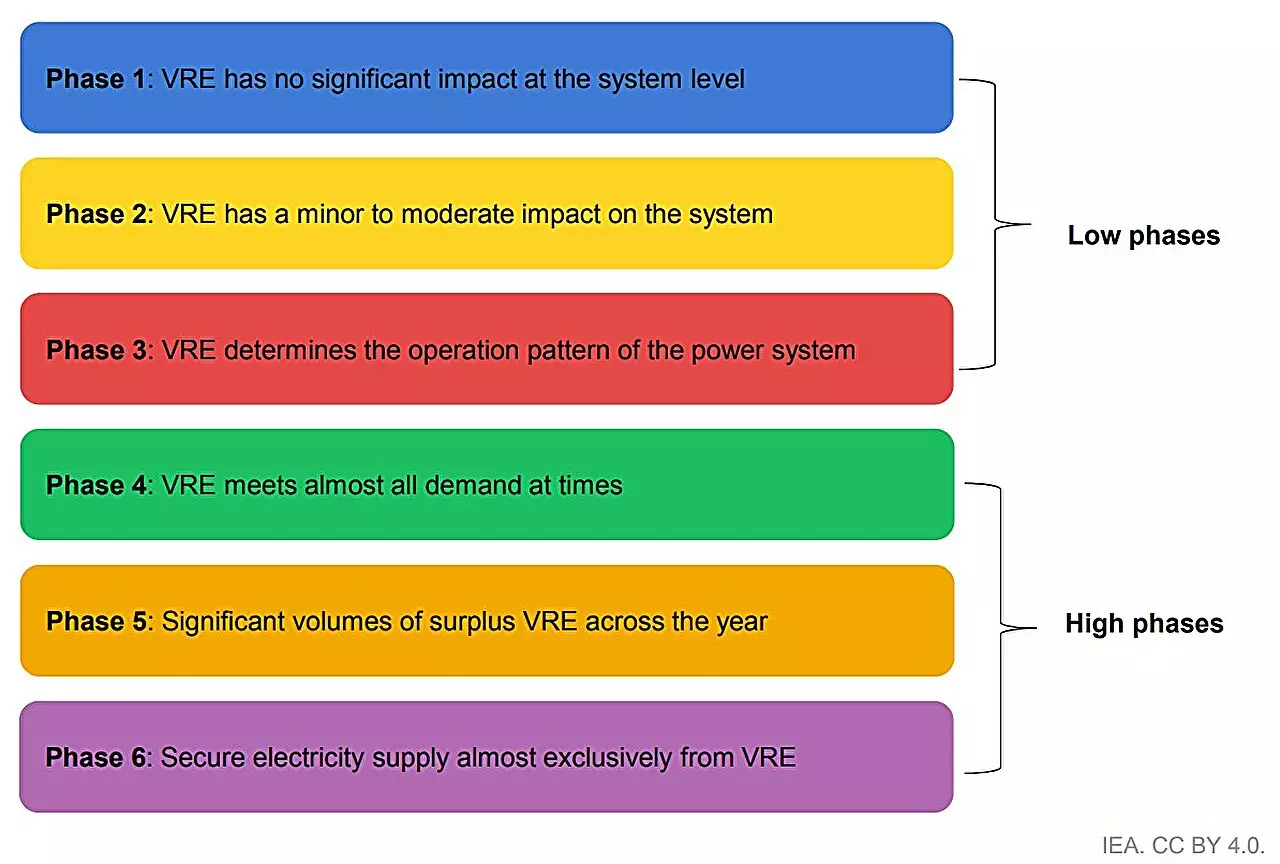The global landscape of energy generation is undergoing a profound transformation, primarily propelled by the exponential growth of solar photovoltaic (PV) and wind energy sources. Recent data indicates a remarkable doubling of solar PV and wind capacity between 2018 and 2023, accompanied by a corresponding surge in their contribution to electricity generation. This pivotal shift is largely a result of favorable government initiatives and technological advancements that have significantly reduced costs. However, as these renewable energy technologies proliferate, their integration into existing power systems emerges as a critical challenge that must be addressed to harness their full potential.
The International Energy Agency (IEA) underscores the necessity of integrating solar and wind energy into the modern power infrastructure. The report titled “Integrating Solar and Wind: Global Experience and Emerging Challenges” highlights that failure to implement effective integration strategies could lead to a substantial shortfall in electricity generation from these sources. Projections suggest that by 2030, electricity generation from solar PV and wind could be 15% lower than optimal if current integration measures are not enhanced.
The implications of such a decline are staggering, as it could result in a reduction of five percentage points in the global electricity mix, hampering efforts towards decarbonization. Renewable energy technologies play a crucial role in minimizing carbon dioxide (CO2) emissions, particularly in the electricity sector, where they account for approximately two-thirds of necessary reductions to achieve net-zero emissions by mid-century. Thus, proactive integration efforts are critical for global energy security and environmental sustainability.
The IEA’s comprehensive analysis examines integration measures across 50 different power systems, encompassing nearly 90% of current global solar PV and wind production. This pioneering stocktake provides insights into the varying stages of variable renewable energy (VRE) integration across nations. The report elucidates that countries with lower current shares of VRE, which generally represent two-thirds of projected generation growth by 2030, can enhance their renewable energy deployment without necessitating sweeping systemic reforms.
Flexible integration strategies and enhanced forecasting capabilities can typically suffice in these scenarios. However, at higher penetration levels, power systems encounter increasingly complex challenges, requiring more sophisticated governance and technological solutions. Countries such as Denmark, Ireland, South Australia, and Spain serve as frontrunners, successfully navigating these complexities and providing valuable templates for others to follow.
Technological Advancement and Policy Role
The technological solutions capable of addressing the challenges posed by higher levels of VRE are, for the most part, mature or nearing maturity. Technologies related to energy storage and advanced grid management are pivotal in balancing the inherently variable output of solar and wind energy across diverse timeframes—daily and seasonally. Nonetheless, it is essential to highlight that the successful implementation of these solutions is principally influenced by policy and regulatory frameworks rather than merely technological innovation.
The potential disruption of traditional power system planning and operations necessitates a paradigm shift in how these systems are designed and maintained. Traditional models often fail to account for the inherent variability associated with renewable energy sources, underscoring the need for a renewed focus on flexibility and stability within power systems.
Looking Ahead: A Sustainable Energy Transition
As nations continue to accelerate their clean energy transitions, it is crucial to initiate proactive measures that facilitate the integration of growing renewable capacity. International collaboration, sound regulatory practices, and continuous technological development will be paramount in achieving these goals. The IEA report serves as a clarion call for governments worldwide to rethink their strategies and support the integration of renewables to realize their environmental targets fully.
The stakes are undeniably high, with the future of global energy security and climate resiliency hanging in the balance. By investing in the right policies and tech solutions today, countries can foster a sustainable energy future that benefits both the environment and their economies. In this race against time, the integration of solar and wind energy into power systems stands as not just an option, but an imperative.

